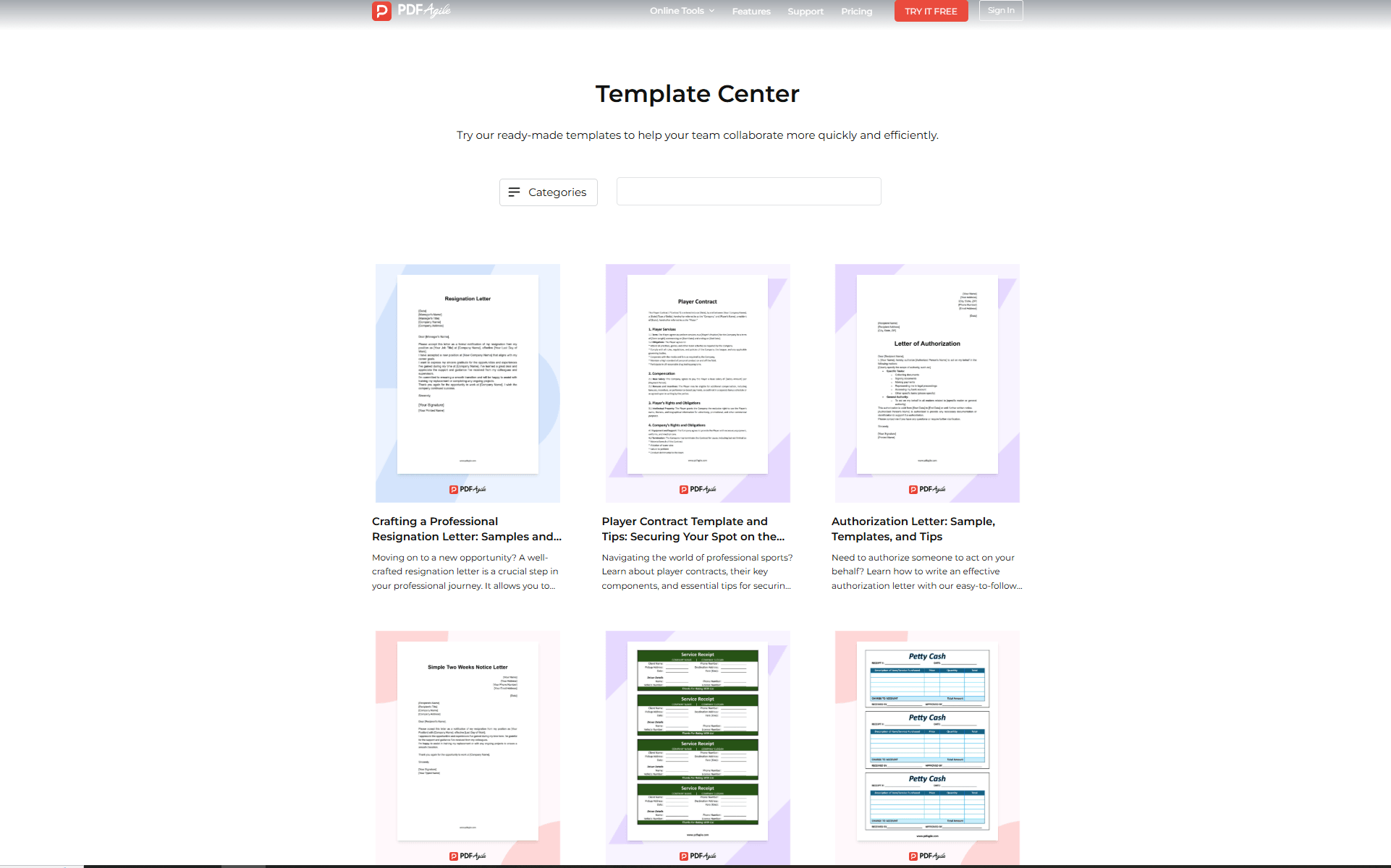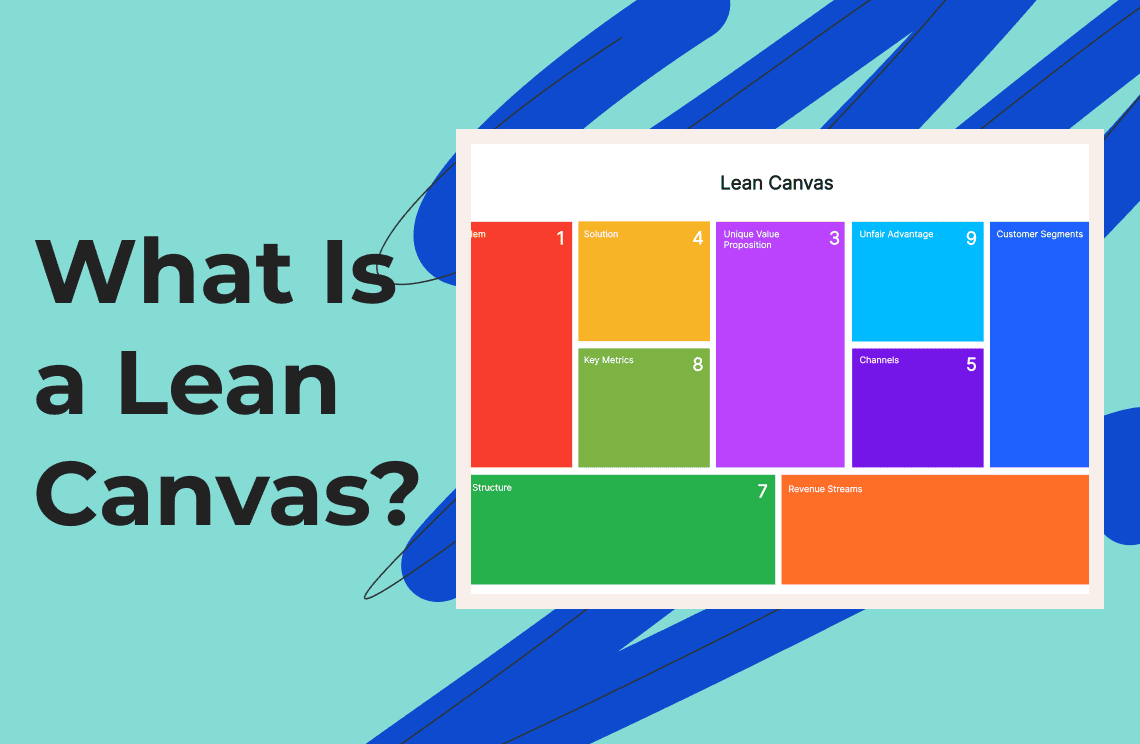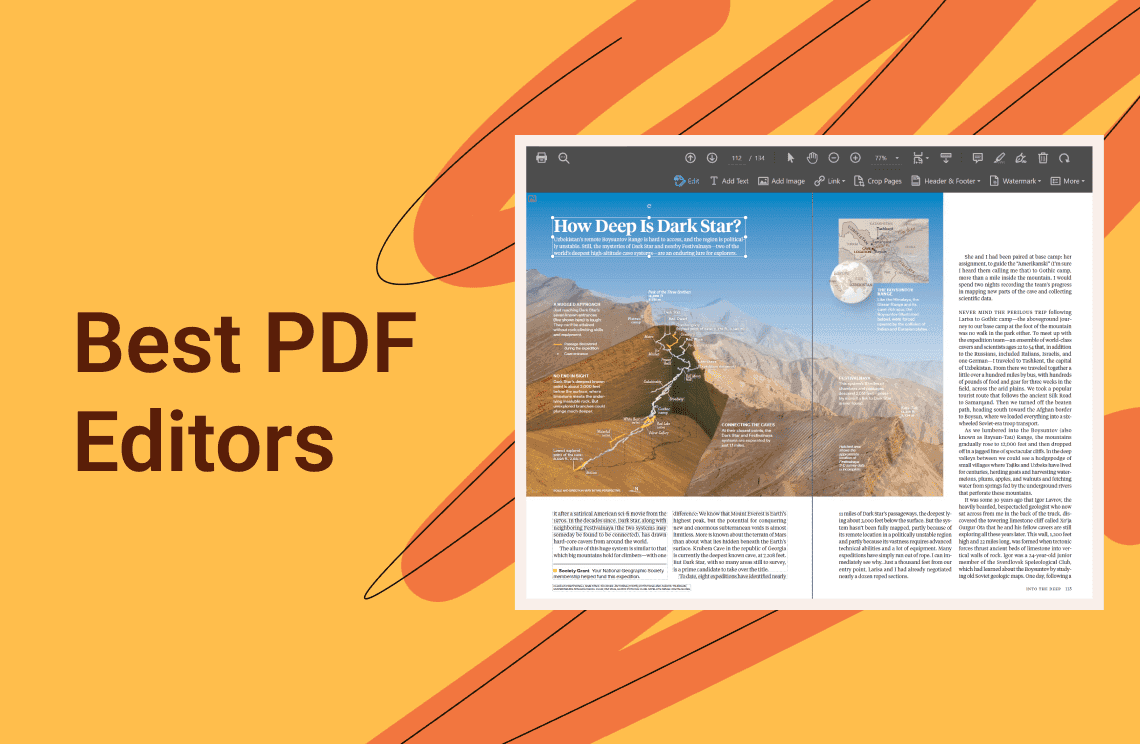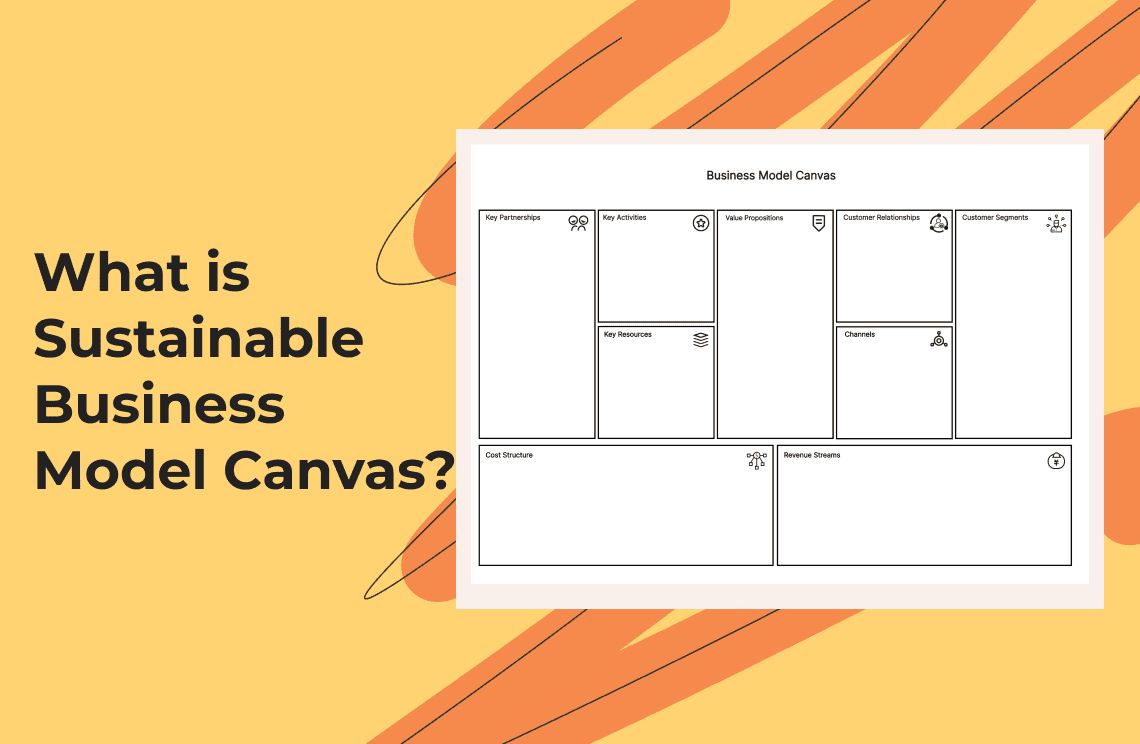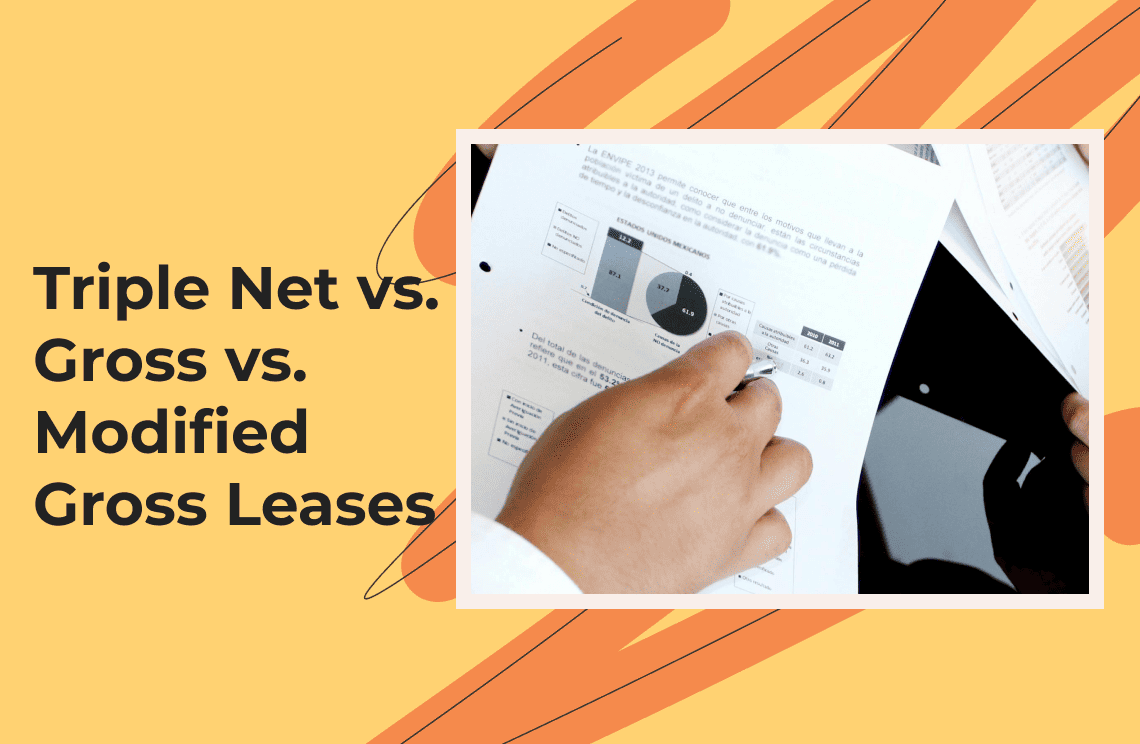In this fast-moving world of startups, your business model should be clear and to the point. This way, you can attract more customers and keep the old ones loyal to your brand. Among the most effective tools an entrepreneur can use to outline a business idea is the Lean Canvas. The Lean Canvas is a modification of the Business Model Canvas, designed by Ash Maurya for startups, to focus on their unique value proposition while reducing waste and maximizing efficiency. Any startup company will find the tool useful. What is a lean canvas? We will provide an answer to this question in this wiretap to help shed more light on what lean canvas stands for.
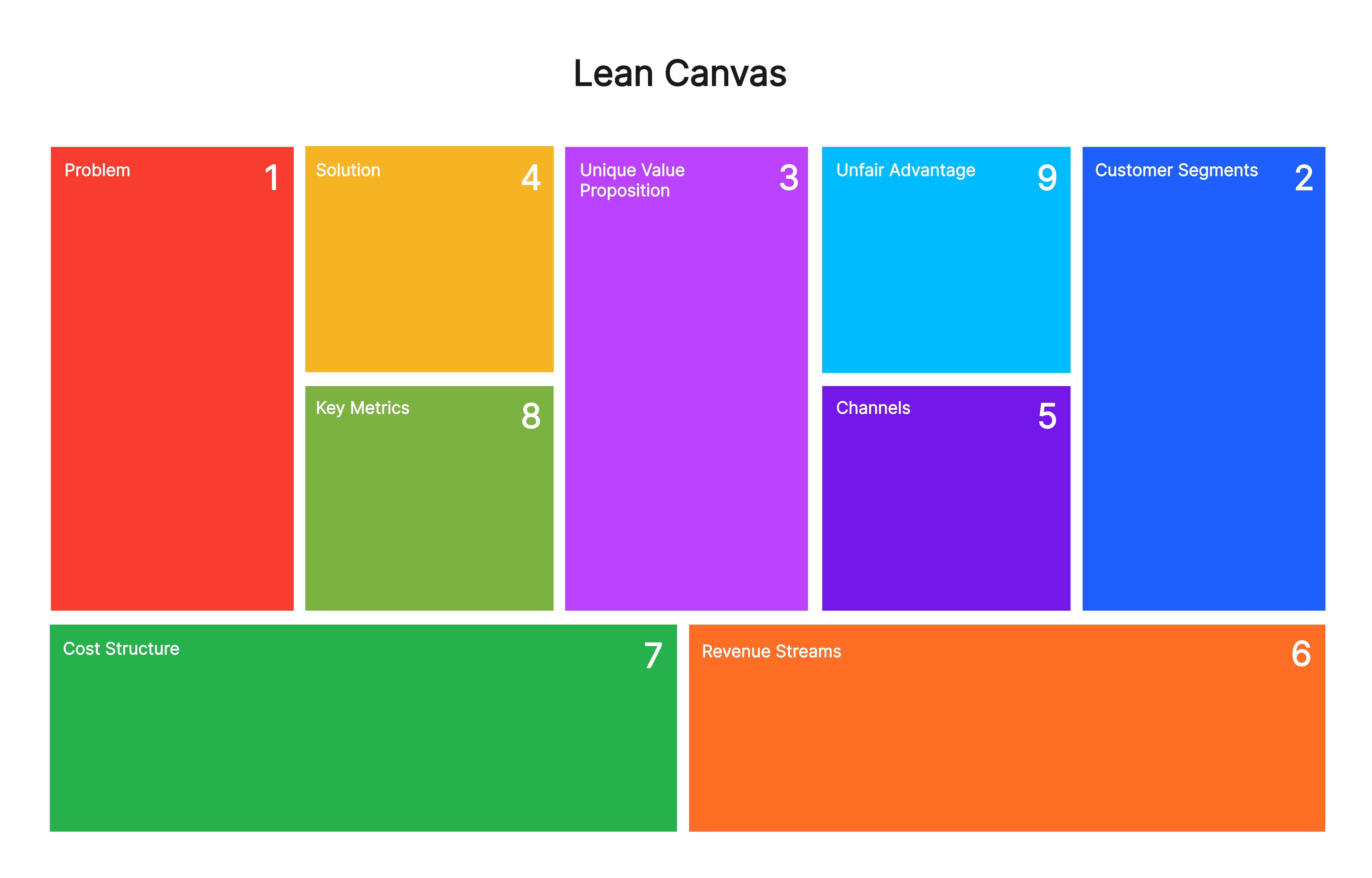
Important Things to Know about Lean Canvas
The Lean Canvas is a one-page business plan that helps founders visualize their business model in a tabulated format. Opposite to traditional business plans, which tend to be lengthy and convoluted, the Lean Canvas is concise and clear to communicate to stakeholders and team members alike. This simplicity makes it accessible and easy to understand. Its design is rooted in the Lean Startup methodology that favors rapid iteration and customer feedback over extensive planning. By focusing on core elements, it encourages quick adjustments and continuous improvement for better business outcomes.
- Problem: Identifies problems or pain points your target customers are experiencing.
- Solution: Summarize how your product or service solves the problem.
- Key metrics: Establish what KPIs will help measure your startup's success.
- UVP: means articulating the unique value of your offering and why customers should buy from you and not from the competition.
- Unfair advantage: Mentioning any competitive advantages that cannot be easily copied by others.
- Customer segments: Identify who your target audience is and understand their needs.
- Channels: Describe how you'll reach your customers and deliver the product or service.
- Cost structure: The analysis of all costs involved in running a business.
- Revenue streams: Identify how your startup will make revenue.
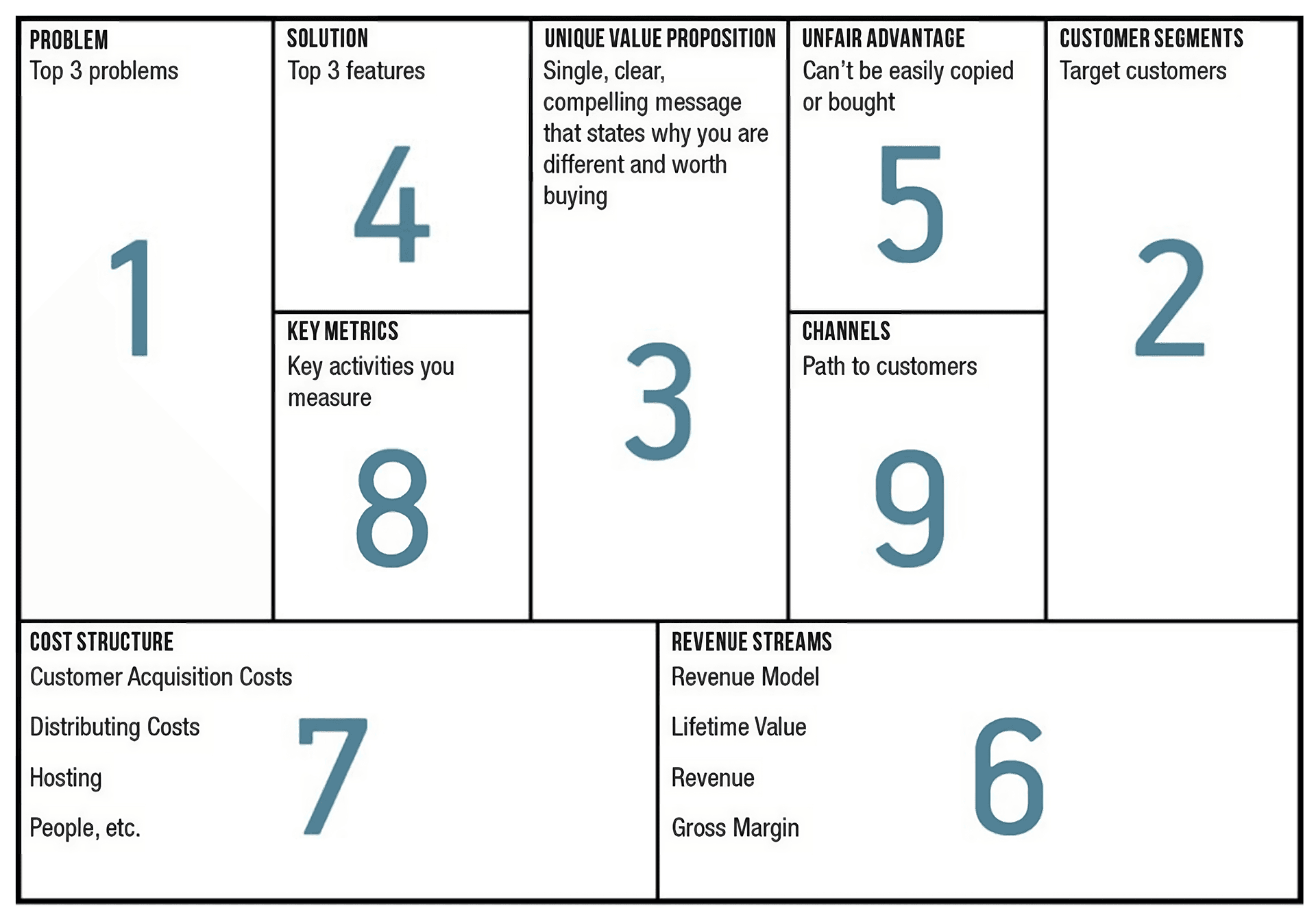
Importance of Each Component
- Problem: The problem statement has a very important implication-it gives you the reason for your start-up to exist. Explaining the problem that your target audience has also laid down a foundation for giving an effective solution to sell.
- Solution: This is where you describe how your product or service solves the problems identified. This should be brief, yet not boring-just highlight the major features that add value to the customers.
- Key metrics: Having measurable objectives allows you to monitor your progress and ensure that you are serving the needs of your customers. Key metrics may include user acquisition rates, customer retention rates, or revenue growth.
- Unique value proposition (UVP): Your UVP distinguishes your offering from competitors. It should succinctly convey why customers should choose your solution over others available in the market.
- Unfair advantage: This component identifies aspects of your business that provide a competitive edge—such as proprietary technology, exclusive partnerships, or unique expertise—that are difficult for competitors to replicate.
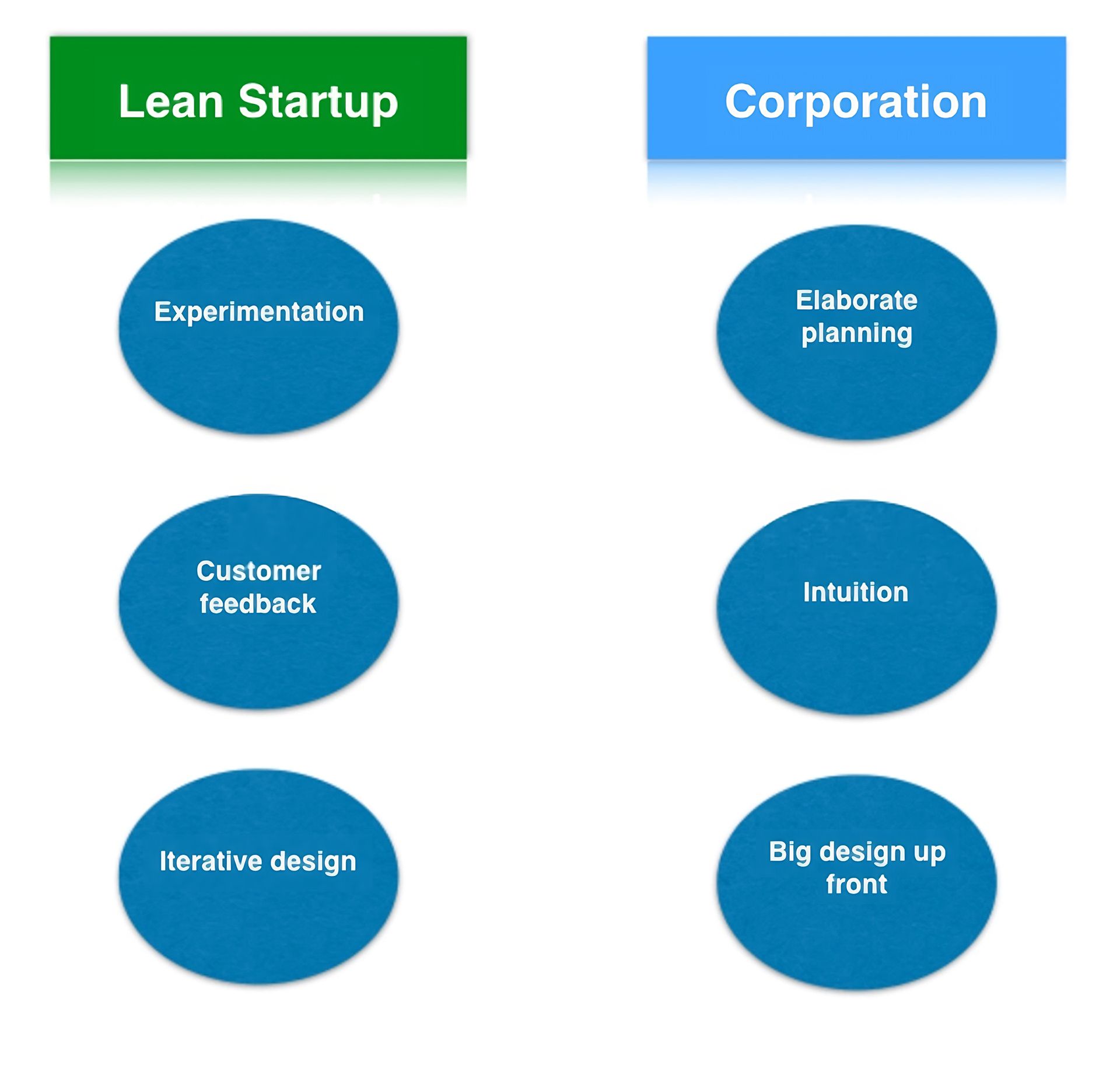
How Lean Canvas Develops Startup Business Ideas?
Lean Canvas is a dynamic tool that supports the development of startup business ideas through several key processes:
- Clarity and focus: The constraint of fitting a business model onto one page means an entrepreneur can quickly distill their idea down to the core components without getting mired in details. This approach forces clarity and helps identify the essential elements that drive the business concept forward.
- Rapid iteration: Lean Canvas is meant to prompt an entrepreneur to do rapid iterations in developing ideas from potential customers and other stakeholders. Testing and validation of assumptions enable reworking towards bringing out an overall better concept. This iterative process ensures that ideas evolve based on real feedback and insights.
- Visual communication: The pictorial nature of Lean Canvas makes discussions among the team or investors easier; hence, it allows the communication of complex ideas in a concise manner. The use of visuals enhances understanding and keeps everyone aligned with the business's strategic goals.
- Finding assumptions: Filling out a Lean Canvas forces entrepreneurs to identify the most critical assumptions they make about their business model, things like customer needs or market demand. This helps them concentrate on the validation of these assumptions in the very early days of development.
- Collaboration: Lean Canvas's simplicity invites collaboration among team members by creating a common framework through which they discuss their ideas and strategies.
Practical Steps in Using a Lean Canvas
In applying the Lean Canvas to your startup idea, follow the steps below:
1. Download a template: Use any white, free Lean Canvas format available online or create one in Google Slides or PowerPoint.
2. Gather your team: Engage all key stakeholders in brainstorming sessions with the goal of collaboratively filling out each section.
3. Define your problem(s): Clearly define no more than three fundamental problems that your target audience faces.
4. Outline your solution(s): Define how your product or service effectively solves these problems.
5. Define key metrics: Clearly state what metrics shall define your startup's success, as well as how you will be able to track them.
6. Create your UVP: You must have a very clearly defined attractive value proposition and must be very visible to your customers.
7. Analyze customer segments: Determine your best customers and segment the market in natural strata or by relevant division. Understanding these segments allows you to tailor your approach for better targeting and customer engagement.
8. Establish channels: Describe how you will reach these customers through a variety of channels. Identify both digital and traditional channels that align with your customer preferences to ensure effective communication and reach.
9. Cost structure & revenue streams: Estimate the running costs of your business, as well as potential revenue streams to establish financial viability. This analysis helps forecast your financial health and ensures sustainability for growth.
10. Iteration & validation: Take customer feedback and use that to iterate each section on the Lean Canvas until you have a sound business model ready for a launch. This process ensures the model evolves based on real insights, minimizing risks.
PDF Agile Template Center and Lean Canvas
Reliance on the PDF Agile template center for lean canvas creation makes the process very easy. The center contains a series of templates you can adopt for creating a lean canvas. Some of its outstanding features are highlighted below:
- Template availability: These templates of the Lean Canvas are available for download from the PDF Agile Template Center with business ideas and strategies. Such templates will facilitate the drawing of a Lean Canvas with appropriate space for each item of the business model.
- Ease of use: By using a template such as the one available from PDF Agile Template Center, the making of a Lean Canvas is rather swift. One does not worry about format and layout, especially for those who are new into business planning, but just focus on ideas he/she wants to input.
- Collaboration and sharing: Most of the templates in the PDF Agile Template Center can easily be distributed among team members or stakeholders. In this regard, it will promote teamwork in developing business ideas and strategies using the Lean Canvas framework.
FAQs
Q: Do I need to have a finished product to take advantage of the Lean Canvas?
A: Nope. Lean Canvas goes very much into the beginning of your development process, even before the time of having the product being built, only with the notion of understanding both the market and customer problems along with the solutions in front of building the actual product.
Q: What if I don't know all the answers?
A: The Lean Canvas is designed to help you define the hypotheses that later on you can go test. You don't need to know everything from the very beginning. You experiment, learn, and iterate based on real customer feedback.
Q: How do I use Lean Canvas for customer validation?
A: Use Lean Canvas to identify assumptions in your business model-for example, assumptions of who your customers may be, or how you will solve their problems. Then go out and speak with potential customers to test those assumptions through interviews, surveys, or prototypes.
Q: Can Lean Canvas be used to help with investor pitches?
A: Yeah, Lean Canvas is an extremely powerful tool during investor pitches since it provides in one simple overview the core of your startup. It depicts a problem one solves, their value proposition, and how they will make money-the investor's dream.
Final Thoughts
In the write-up above, you would have gotten an answer to the question: what is the purpose of a lean canvas. The Lean Canvas is an excellent tool that systematically helps entrepreneurs flesh out startup ideas in a very effective way, as described above. By focusing on the main components already discussed, startups can draw ways to achieve success with little waste resulting from traditional methods of business planning. PDF Agile Template Centre offers an endless collection of templates for Lean Canvas creation. The templates are sharable, downloadable, and editable. You can, therefore, share the lean canvas thus created with your potential partners and investors remotely or during on-site discussions and presentations. Try it out today for an effective and easier lean canvas creation.
Additionally, if you're looking for some free and beautiful templates, check out our PDF Agile Template Centers and PDF Agile Strategy & Planning Templates.
